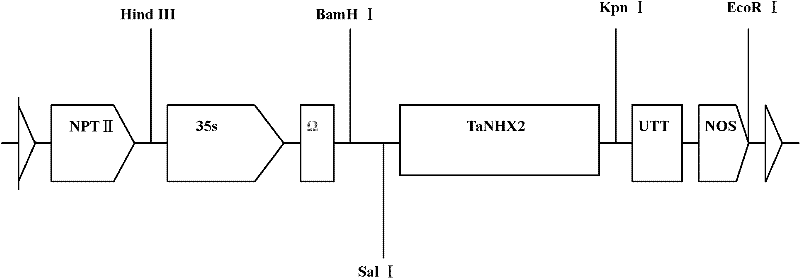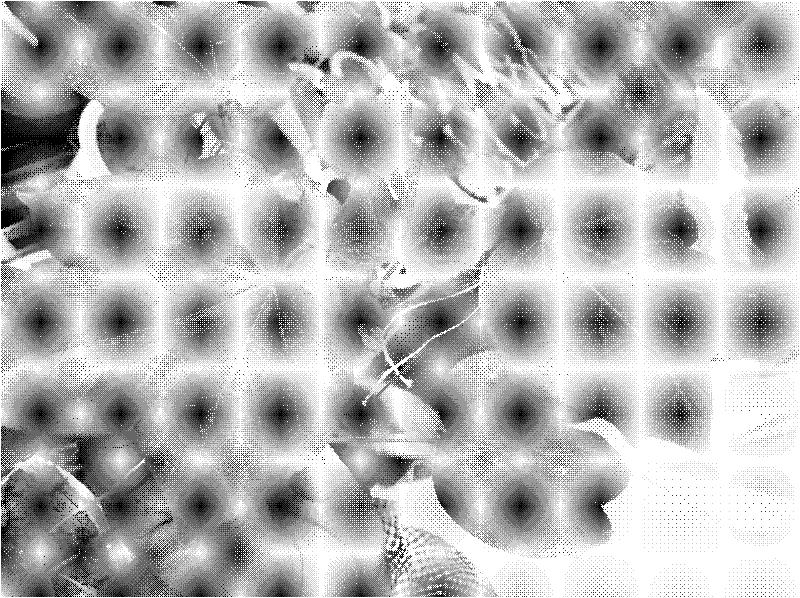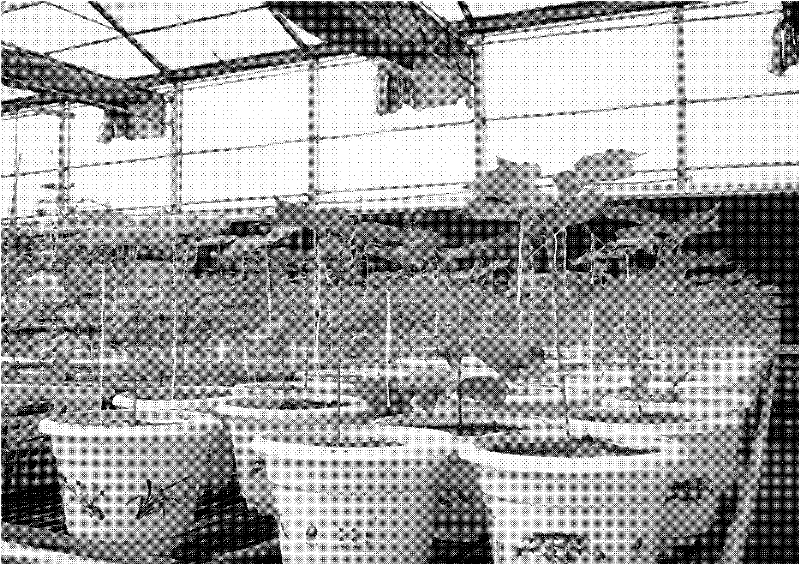Method for directly transforming cotton seed embryos by utilizing agrobacterium tumefaciens
A cotton seed, Agrobacterium tumefaciens technology, applied in the fields of botanical equipment and methods, applications, angiosperms/flowering plants, etc., can solve the problems such as the limitation of plant quality improvement by transgenic technology, the high incidence of deformed seedlings, and the complicated transformation methods. , to achieve the effect of low survival rate, high incidence rate and easy operation of direct transplanting
- Summary
- Abstract
- Description
- Claims
- Application Information
AI Technical Summary
Problems solved by technology
Method used
Image
Examples
Embodiment 1
[0027] Embodiment 1, the Agrobacterium genetic transformation of cotton
[0028] 1. Construction of recombinant Agrobacterium tumefaciens containing target DNA
[0029] The target gene TaNHX2 (Genbank No. AY040246, Sequence Listing Sequence 1) was recombined into the plant binary expression vector pBin438 (Li Taiyuan, Tian Yingchuan, Qin Xiaofeng, etc. Research on highly efficient insect-resistant transgenic tobacco [J]. Chinese Science (Series B), 1994, 24 (3): 276-282.) Between the Sal I and Kpn I restriction sites behind the CaMV 35S promoter, the recombinant vector pTaNHX2 ( figure 1 ). The selectable marker gene in pTaNHX2 is the kanamycin resistance gene NPT II.
[0030] pTaNHX2 was transformed into Agrobacterium tumefaciens GV3101 (Agrobacterium tumefaciens) to obtain recombinant Agrobacterium tumefaciens GV3101 / TaNHX2 containing TaNHX2.
[0031] 2. Preparation, inoculation and co-cultivation of explants
[0032] Take Jinmian No. 7 (Jinmian No. 7 was bred by the Lin...
PUM
 Login to View More
Login to View More Abstract
Description
Claims
Application Information
 Login to View More
Login to View More - R&D
- Intellectual Property
- Life Sciences
- Materials
- Tech Scout
- Unparalleled Data Quality
- Higher Quality Content
- 60% Fewer Hallucinations
Browse by: Latest US Patents, China's latest patents, Technical Efficacy Thesaurus, Application Domain, Technology Topic, Popular Technical Reports.
© 2025 PatSnap. All rights reserved.Legal|Privacy policy|Modern Slavery Act Transparency Statement|Sitemap|About US| Contact US: help@patsnap.com



